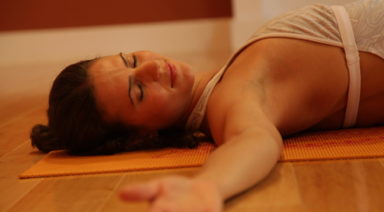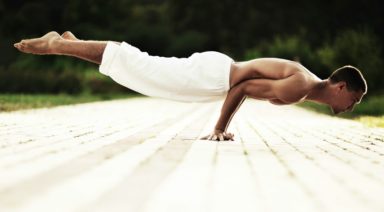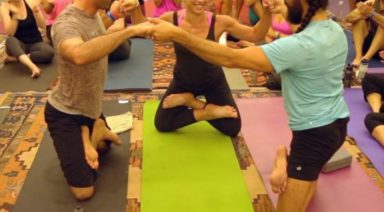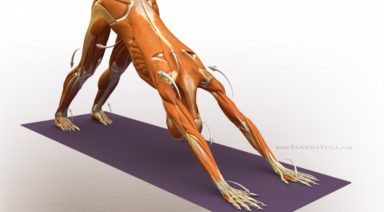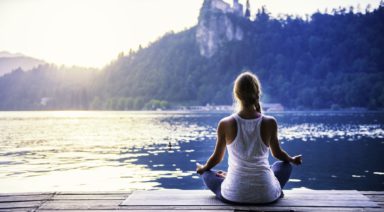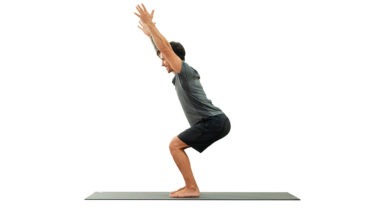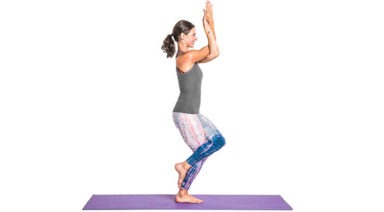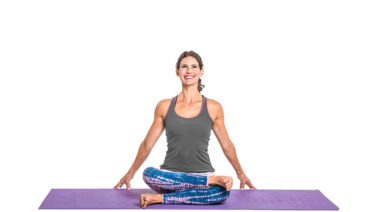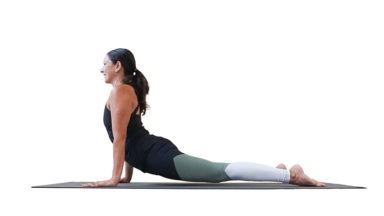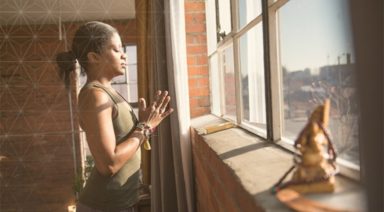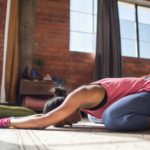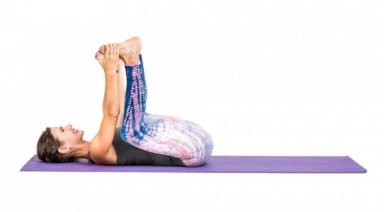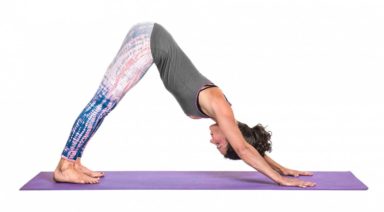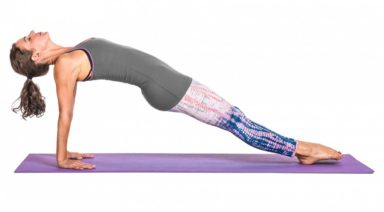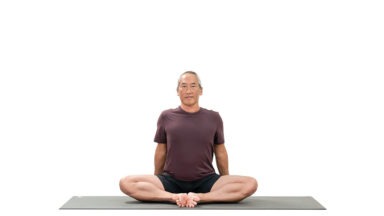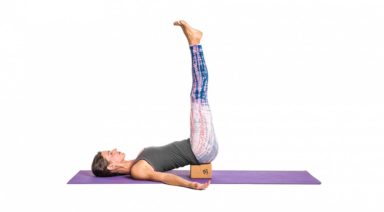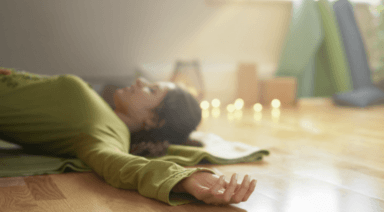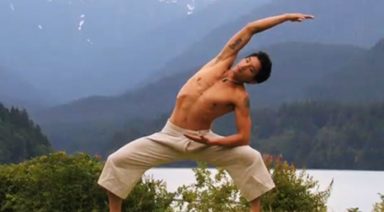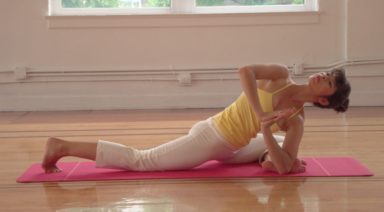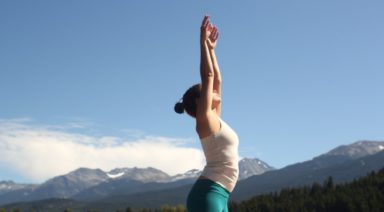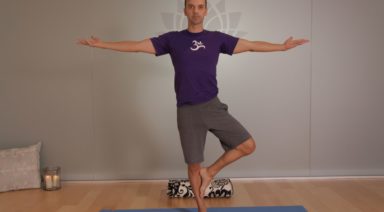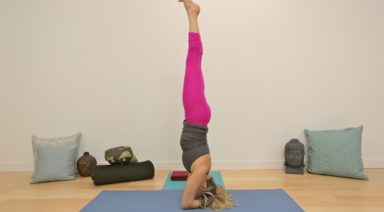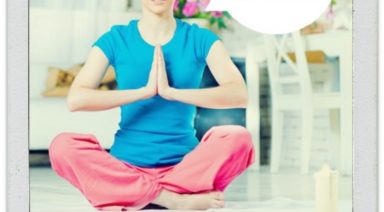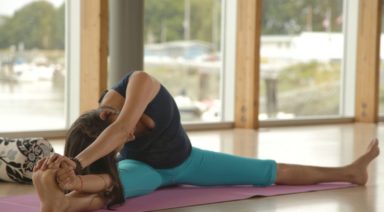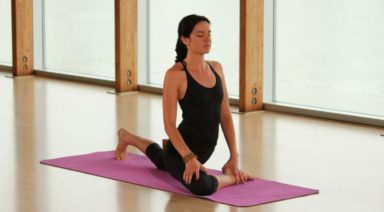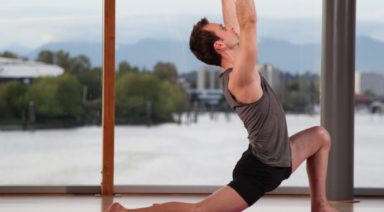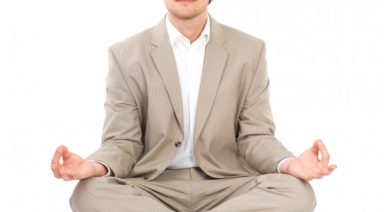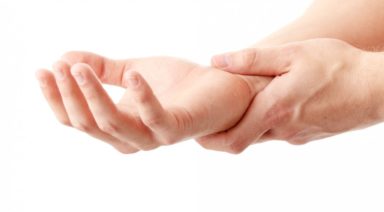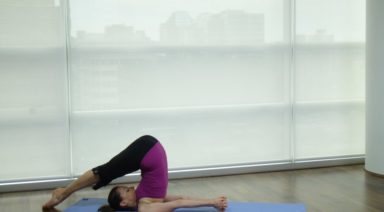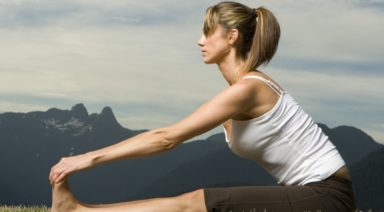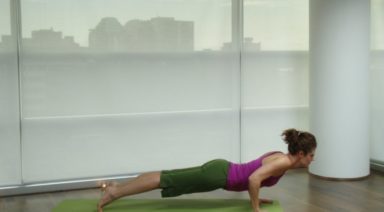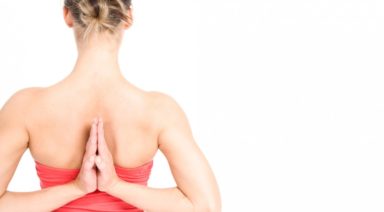5 Detox Yoga Poses
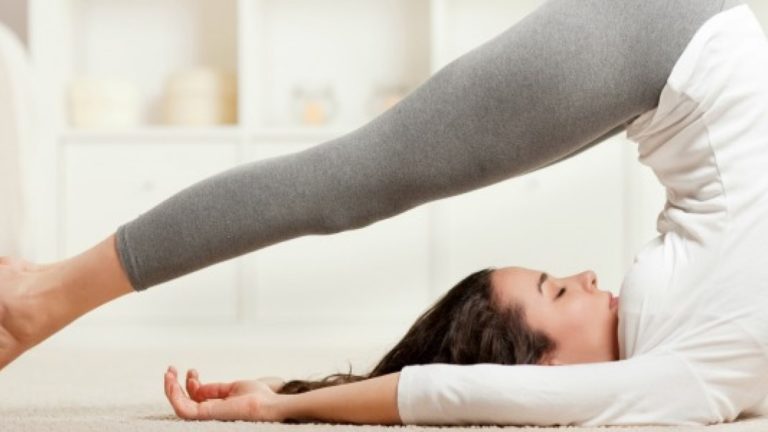
It’s the perfect time to become your healthiest and whole self. You cannot extend to others what you, yourself do not contain. Become your happiest, healthiest, self this year and extend that health and joy to those around you. Don’t only focus on detoxing your physical body, but detox your relationships as well. As we cleanse our physical bodies, it is just as important to surround ourselves with healthy people.
What about your mental clarity? Your spiritual being? Are all these areas cleansed? What steps do you need to take to detox your entire life? Below are five detox yoga poses that can help you detoxify your physical body. We will focus on revolved and inverted yoga asanas as each of these asana families will detoxify your entire system. We will explore three revolved postures and two inversions.
Twists and Revolved Poses
A twist will not only leave you feeling energized and focused but will also give you mental clarity, relieve stress and deep tension and will detoxify your entire system by primarily massaging your internal organs. I like to tell students to think of a dirty washrag being wrung out; This is what we are doing to our systems as we practice revolved postures.
These can be incorporated into almost every yoga posture, whether we’re seated, standing, balancing, prone or in a supine (on your back) position. Revolved postures can be challenging. You will need patience in your journey with twists, as they can be challenging and uncomfortable in the beginning. The more you practice these demanding poses, the better you will become, so embrace where you are and enjoy the journey.
Yoga twists increase the flexibility of your entire abdominal wall including obliques and most back muscles. Inactivity can reduce the range of movement available to all your joints. Twists can assist in mobilizing the joints of your spine by rotating each vertebra gently. Any revolved pose will squeeze the internal organs and encourage the flow of oxygenated blood while eliminating toxins and metabolic waste products. The liver, kidneys, stomach, pancreas, and spleen all benefit from the twisting poses of yoga. Twisting poses can also help reduce abdominal bloating and digestive discomfort.
Revolved Triangle Pose or Parivrtta Trikonasana
Benefits:
- Strengthens and stretches the legs( especially the thighs), knees, ankles and arches
- Stretches and opens the chest, lungs, shoulders, groins and spine
- Increases lung capacity
- Stimulates abdominal organs aiding in digestion and circulation
- Improves alignment of the spine; improving posture and increasing flexibility and mobility of the spine
- Improves balance
- Can be therapeutic for backache, arthritis, infertility, constipation, asthma and sciatica
- Increases stamina and energizes
- Improves concentration, focus, will power and mental clarity
- Relieves, stress, anxiety and depression
Cautions:
If you have a major spinal injury you should avoid this posture. Use caution if you have a headache, high or low blood pressure, an ankle or knee injury, insomnia, or a shoulder injury. If you have a neck injury, keep your gaze either facing forward or towards the ground.
Revolved Chair or Parivrtta Utkatasana
Benefits:
- Rejuvenates the blood system throughout the entire body
- Stimulates and massages the abdominal organs (including ovaries, prostate gland, bladder and kidneys). This improves and relieves digestion issues and tones the abdominal wall
- Strengthens the obliques and transverse abdominal, as well as opens the arm pits and strengthens inner and outer intercostal muscles
- Strengthens and stretches the back muscles, aligns and awakens the spine and improves posture
- Stretches and strengthens the calves, quadriceps, hamstrings, hips, shoulders, chest, feet, ankles, knees and spine; relieves tension in the back, neck and shoulders
- Increases flexibility, lubricates ankle and knee joints and awakens the legs
- Stimulates the heart, improves circulation, respiratory and lymphatic systems
- Therapeutic for mild sciatica, backache, arthritis, osteoporosis, flatulence, menopause, menstrual discomfort and can improve infertility issues
- Reduces stress and anxiety
- Stimulates and energizes the nervous system
- Improves concentration, stamina, mental focus and relieves mild depression
- Relieves mental and physical lethargy and exhaustion
- Calming, centering and balancing; it brings a state of tranquility as well as can be invigorating
Cautions:
Use caution if you have high or low blood pressure; a headache or migraine; low back or shoulder injury; insomnia; a hip, knee or ankle injury, severe asthma, sciatica, degenerated or herniated disk(s); or are pregnant
Half Twist Pose or Ardha Matsyendrasana
Benefits:
- Stimulates and massages the abdominal organs (ovaries, prostate gland, bladder and kidneys), improving and relieving digestion issues, as well as toning the abdominal wall
- Strengthens the obliques and transverse abdominal
- Strengthens inner and outer thighs
- Strengthens and stretches the back muscles, aligns and awakens the spine, improves posture
- Stretches the hips, shoulders, chest and spine, relieving tension in the back, neck and shoulders
- Increases flexibility and lubricates ankle and knee joints, awakening the legs
- Stimulates heart and improves circulation
- Therapeutic for mild sciatica, backache, arthritis, osteoporosis, flatulence, menopause, menstrual discomfort and can improve infertility issues
- Reduces stress and anxiety
- Stimulates and energizes the nervous system
- Improves concentration, mental focus and relieves mild depression
- Relieves mental and physical lethargy and exhaustion
- Calming, centering and balancing. Brings a state of tranquility and can be invigorating
Cautions:
Use caution if you have a low back or shoulder injury; hip, knee or ankle injury; severe sciatica, degenerated or herniated disk; a headache or migraine; or are pregnant.
Inverted Yoga Postures
Inversions are postures that typically have the heart and often the feet, higher than the head. Most inversions stimulate your pituitary gland, promoting a positive state of well-being and rejuvenation. Inversions also benefit the cardiovascular, lymphatic, endocrine and nervous systems while stimulating the lymphatic system which strengthens the immune system and also improves digestion.
Cardiovascular benefits of inversion postures provide more efficient circulation caused by a fresh delivery of blood to the heart. Being inverted also increases blood flow to your head, relieving the heart of some of its duties and can lower blood pressure and heart rate. Your endocrine system is responsible for hormone delivery. Inversions, especially shoulder stands, are recommended for perimenopausal and menopausal women due to the belief that the postures will stimulate the thyroid and parathyroid glands, regulating your metabolism. The benefits to the nervous system during inverted postures include the stimulation of cerebrospinal fluid or CSF, which is the fluid of the central nervous system that flows from the brain to the spinal cord.
Plow Pose or Halasana
Benefits:
- Stimulates abdominal organs, ovaries, prostate gland, bladder and kidneys. This improves and relieves digestion issue and tones the abdominal wall
- Stimulates the thyroid and parathyroid glands which increases metabolism and stimulates the nervous, digestion and respiratory systems
- Strengthens and stretches the back muscles, aligning spine and improving posture
- Opens the shoulders and chest and relieves tension in the back, neck and shoulders
- Awakens the legs
- Stimulates the heart and improves circulation
- Therapeutic for headaches, migraines, backache, menopause discomfort, infertility, insomnia and sinusitis
- Reduces stress and anxiety
- Improves concentration, mental focus and relieves mild depression
- Relieves mental and physical lethargy and exhaustion
- Calming and centering, it brings a state of tranquility and over all well-being
- Invigorating and rejuvenating
Cautions:
If you have asthma or high/low blood pressure, practice with feet on raised props. Use caution if you have severe sciatica or a herniated disk; if you have a back, neck or shoulder injury, if you’re menstruating, if you have glaucoma.
If you’re pregnant but experienced in this posture, you may continue to practice until the third trimester. If you’re inexperienced with plow after becoming pregnant, you should avoid this posture
Tripod Headstand Pose or Salamba Sirsasana
Benefits:
- Stimulates abdominal organs, ovaries, prostate gland, bladder and kidneys. This improves and relieves digestive issues and tones the abdominal wall
- Strengthens the entire musculoskeletal system
- Stimulates the thyroid and parathyroid glands which increases metabolism and stimulates the nervous, digestion and respiratory systems
- Strengthens and stretches the back muscles by aligning the spine and improving posture
- Opens the shoulders and chest and relieves tension in the back, neck and shoulders
- Awakens, stretches and strengthens the entire body and spine
- Stimulates heart and improves circulation
- Therapeutic for headaches, migraines, backache, menopause, menstrual discomfort, infertility, insomnia and sinusitis
- Reduces varicose veins
- Reduces stress and anxiety
- Improves balance and concentration, mental focus and relieves mild depression
- Relieves mental and physical lethargy and exhaustion
- Calming and centering, it brings a state of tranquility and overall well-being
- Invigorating and rejuvenating
Cautions:
Use caution if you have high or low blood pressure; a headache or migraine; a back, neck or shoulder injury, severe sciatica or a herniated disk; and if you’re menstruating; pregnant; have diarrhea; have glaucoma.
Top 10 Yoga Poses for Headaches
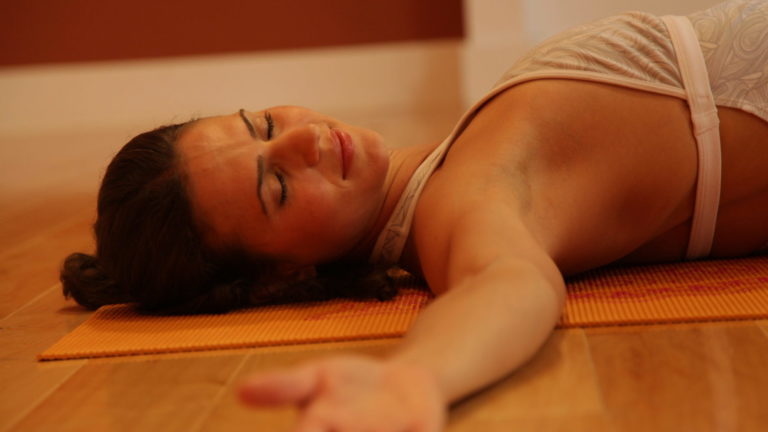
Yoga can be a beneficial therapeutic tool for relieving headaches brought on by muscle tension and stress. The majority of headaches originate from muscle stiffness and imbalances emanating from the neck and upper back. When headaches set in, using a series of restorative yoga exercises can greatly relieve both the cause and symptoms. Here are our top yoga poses and exercises that naturally treat headaches.
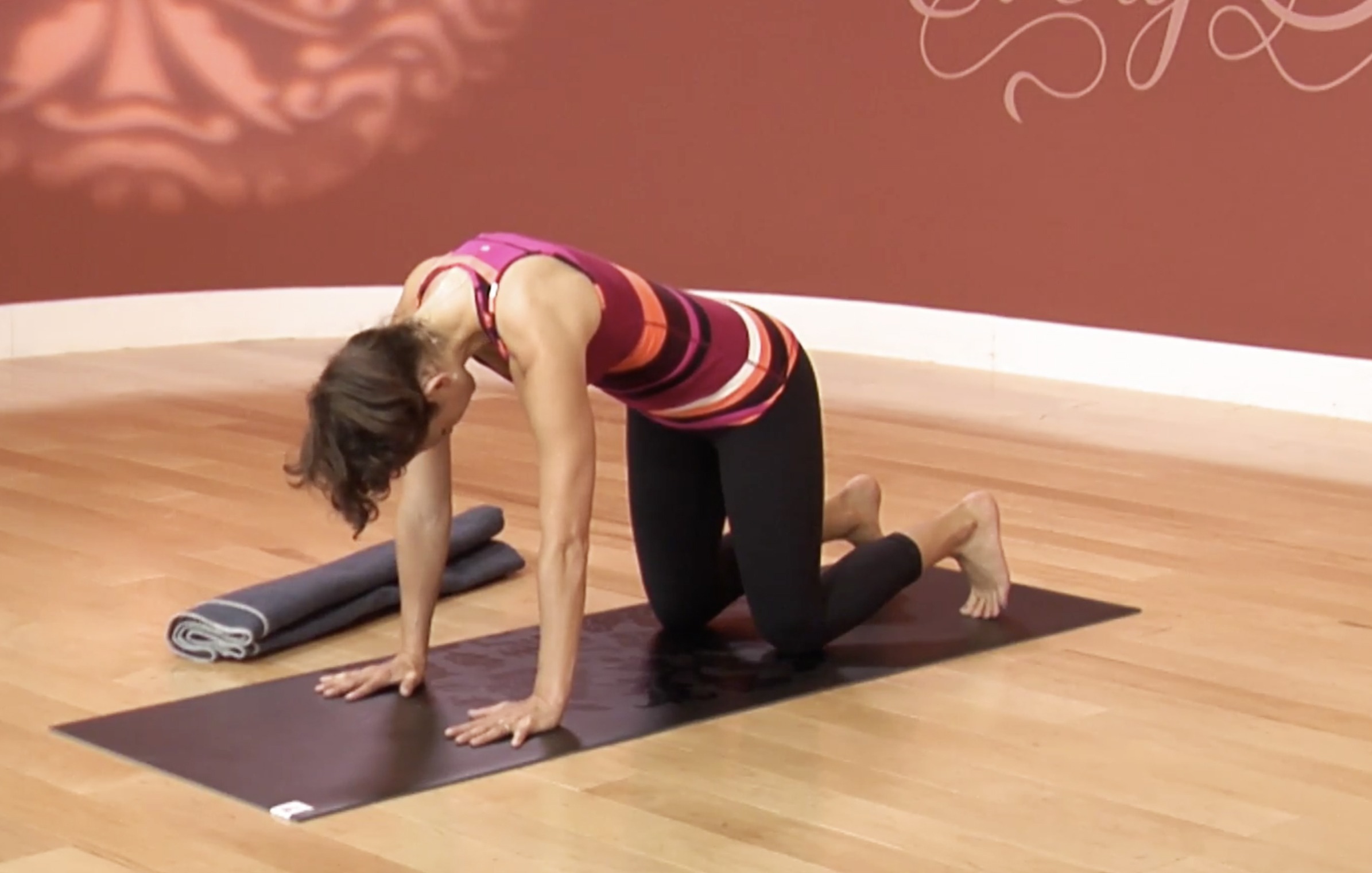
1. Cat Pose: The flowing motion of breath and spine helps release tension from the neck and upper back while also pouring refreshing energy through the body and mind.
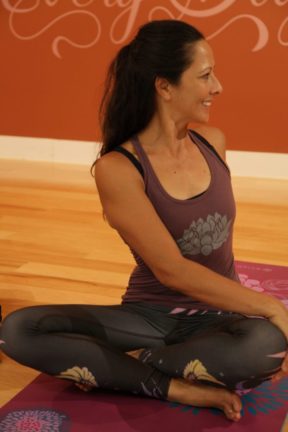
2. Seated Twists: Besides increasing circulation throughout the entire length of the spine, the twisting motion in the upper spine (cervical region) often alleviates tension coming from the scalene muscles of the neck (anterior aspect).
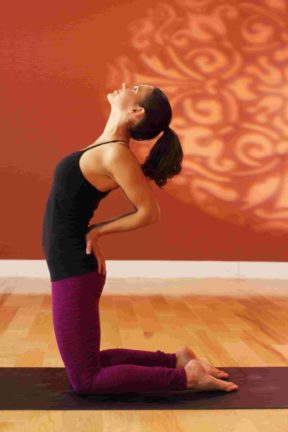
3. Chest Openers: Much of the tension in the back body is a result of muscle dominance from the front body (called Upper Cross Syndrome). Expanding the chest and front shoulder muscles helps break down muscular imbalances and frees the tension coming from the neck.
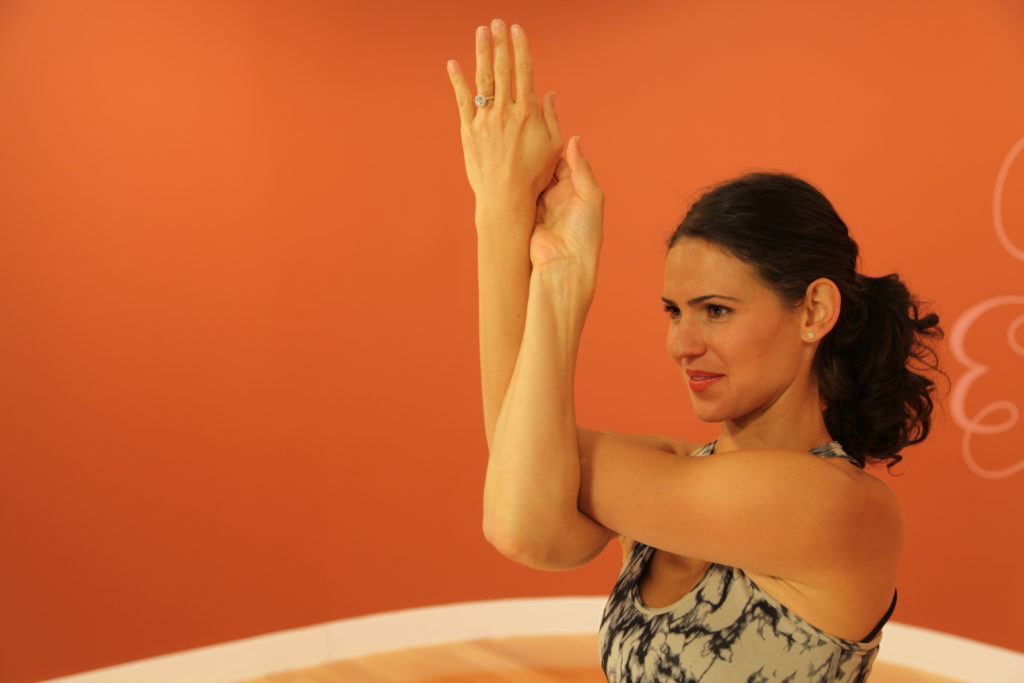
4. Eagle Arms: This simple crossed arm pose can be done in Mountain Pose or any natural seated posture. This back expander can reach well into the mid and upper back targeting problematic muscles around the shoulder blades and the base of the neck. Take time in this arm pose to breath slow and full into the upper back and insure that you perform this arm pose on both sides.
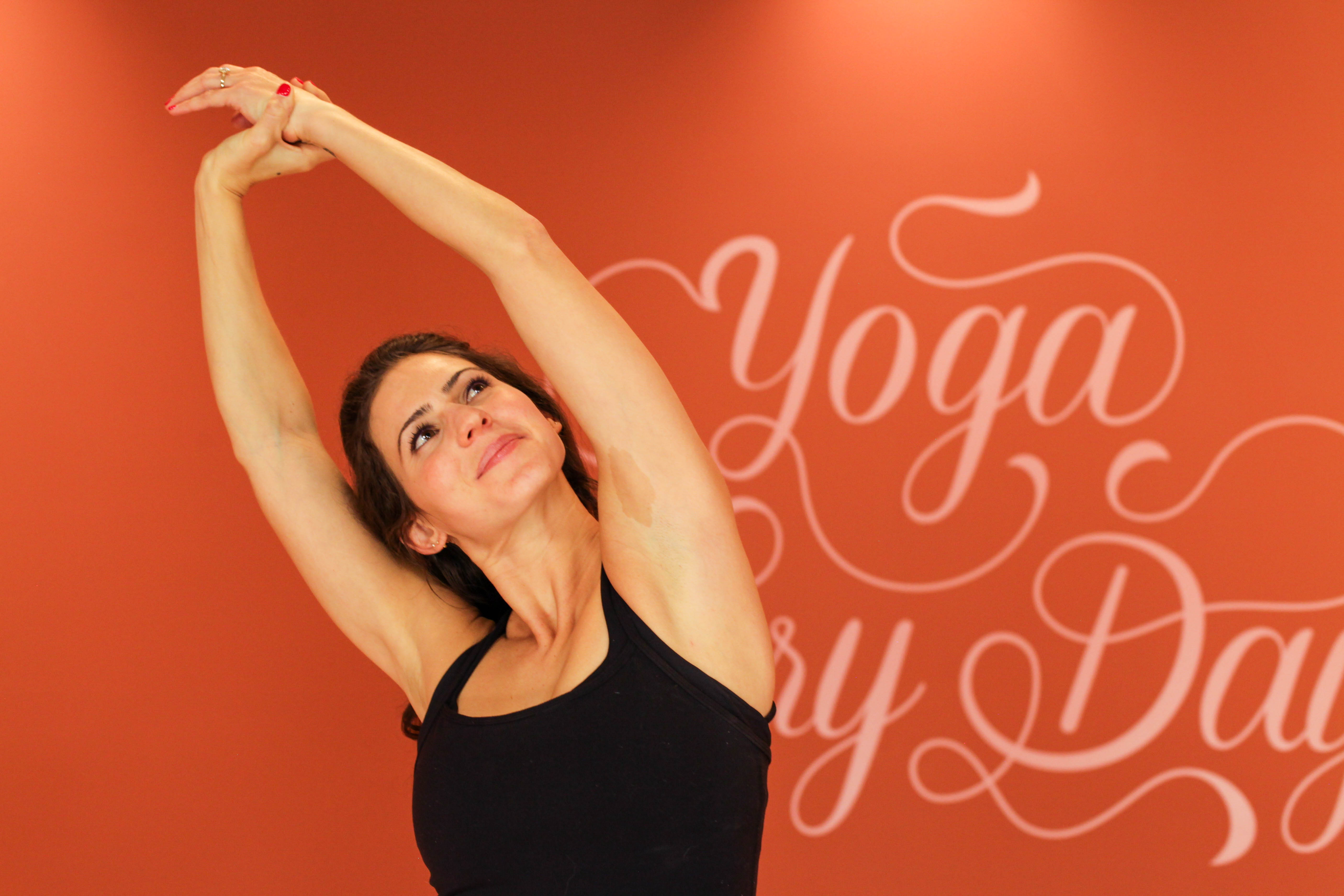
5. Simple Neck Stretches: Gently move through the various muscle fiber lines by allowing your head to float down to one shoulder with gravity, down across the chest and into the other side – repeat with a natural, unforced motion. Avoid letting the head fall back-keep the motion in a half circle from one shoulder to the other. Pause where you find extra areas of resistance.
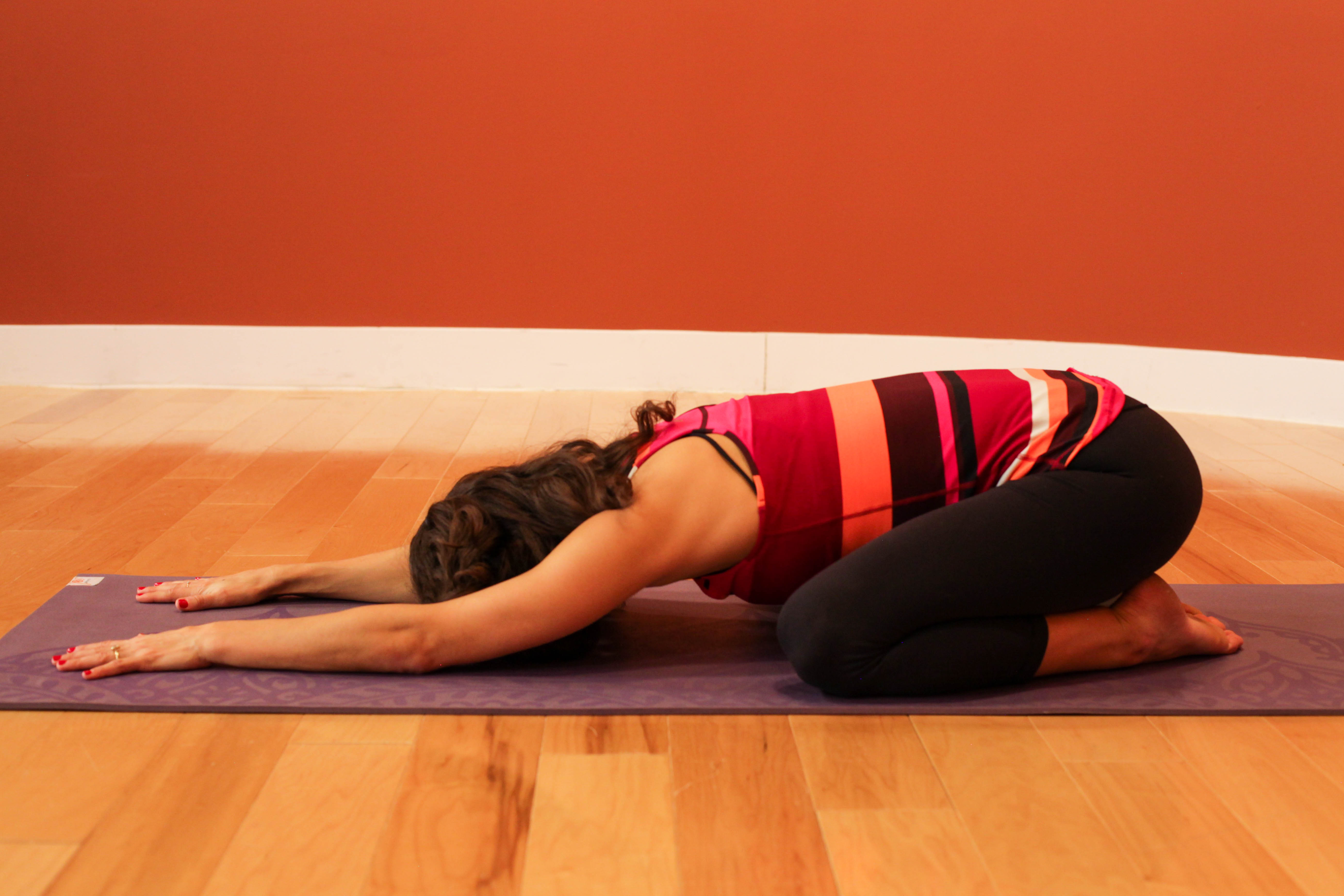
6. Child’s Pose: A perfect restorative yoga pose that slightly inverts the body. A gentle flow of extra blood circulates into the head helping relieve tension. With the legs slightly separated, you can easily settle into deep core and back breathing to encourage a flood of circulation to reach deep into the body. Note that the head and neck should be absolutely comfortable. If needed, keep you arms forward or bend the elbows and rest the forearms by your chest/under your shoulders so the palms face up-this will greatly unload any pressure from the neck.
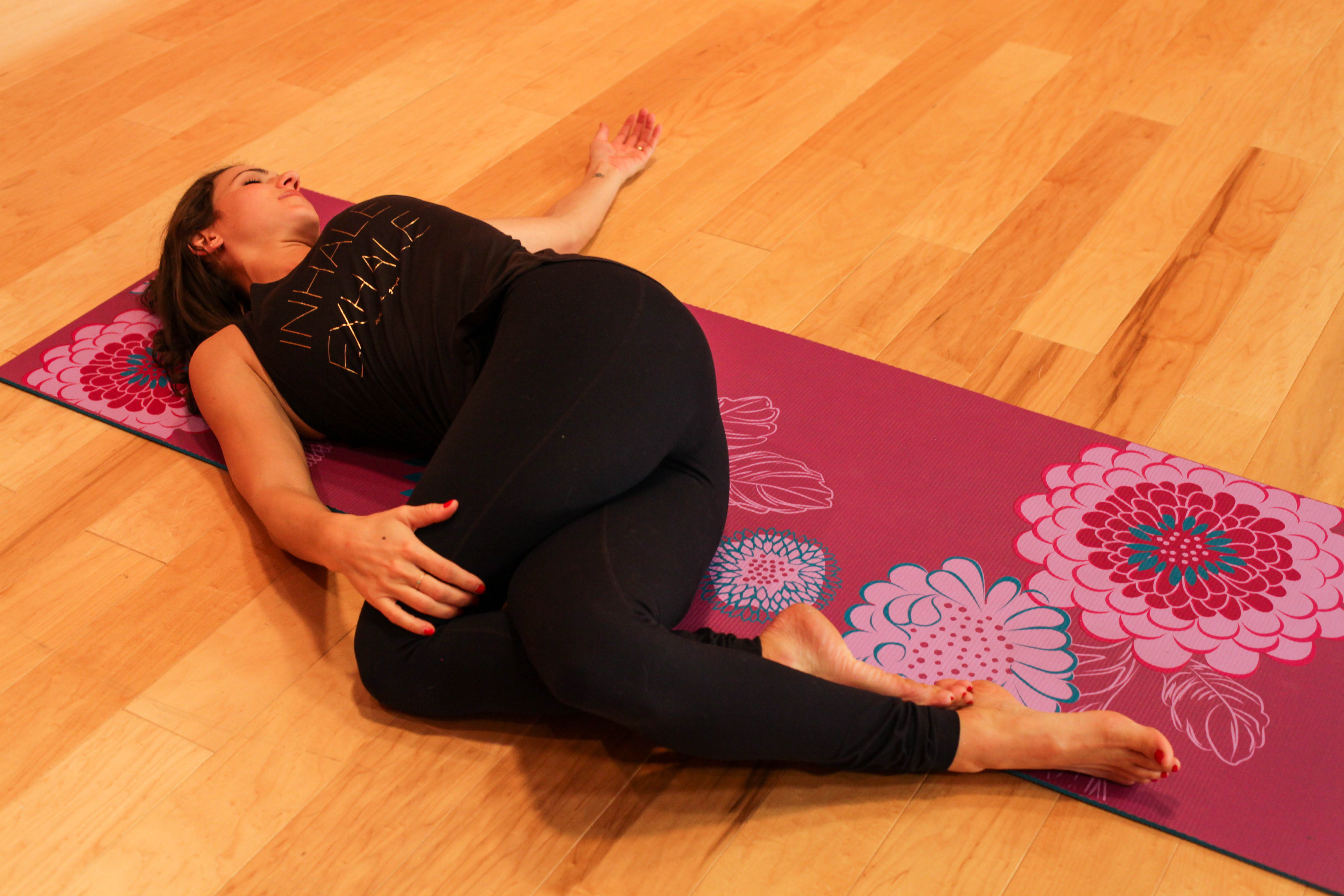
7. Two Knee Reclining Twist: Unlike our seated twists, this reclining twist can be far more restorative and held longer to bring deeper focus into relaxing the nervous system while the chest expands and rejuvenates the spine. Give extra attention to releasing the shoulders into the mat to release dominance of the shoulder and chest muscles.
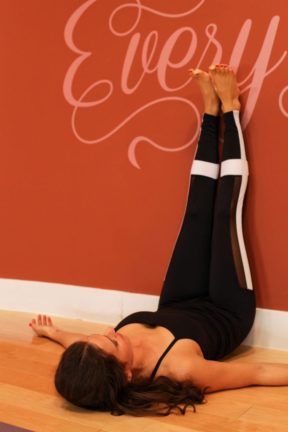
8. Legs Up The Wall Pose: This highly beneficial inverted pose is great for developing hamstring flexibility and for improving circulation in the lower limbs. For headaches, the extra flow of blood to the brain and the restorative support can be deeply relaxing and nourishing.
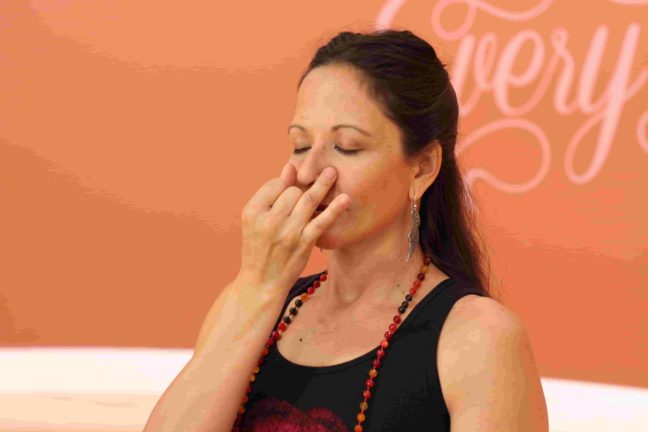
9. Alternate Nostril Breathing: The aim of alternate nostril breathing is to restore balance to the energy systems. With balance, we find release and calm. This yoga breathing exercise is easy to do for all levels and targets the nervous system by slowing brain waves, calming the mind, and purging stress.

10. Relaxation Pose: After doing a series of restorative yoga poses, take some time to simply relax and release in Savasana. Turn the focus away from the symptoms of your headache and settle into the sensation of mental and physical release. You may find a light eye pillow helpful in moving tension/pressure out of the eyes and forehead. Increase your comfort by placing a bolster under the knees and a thin pillow under the head. To complement the chest openers and reclining twists, lay with the arms open to the sides/palms facing the ceiling.



